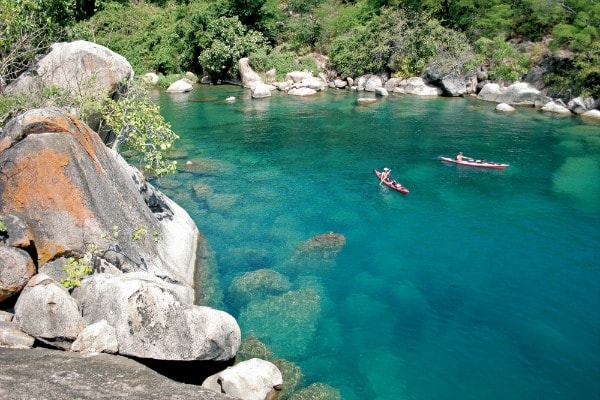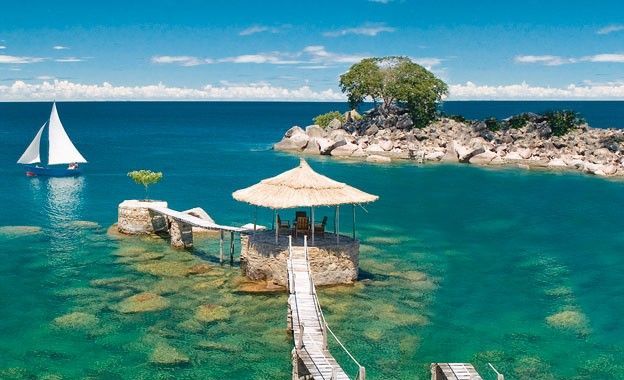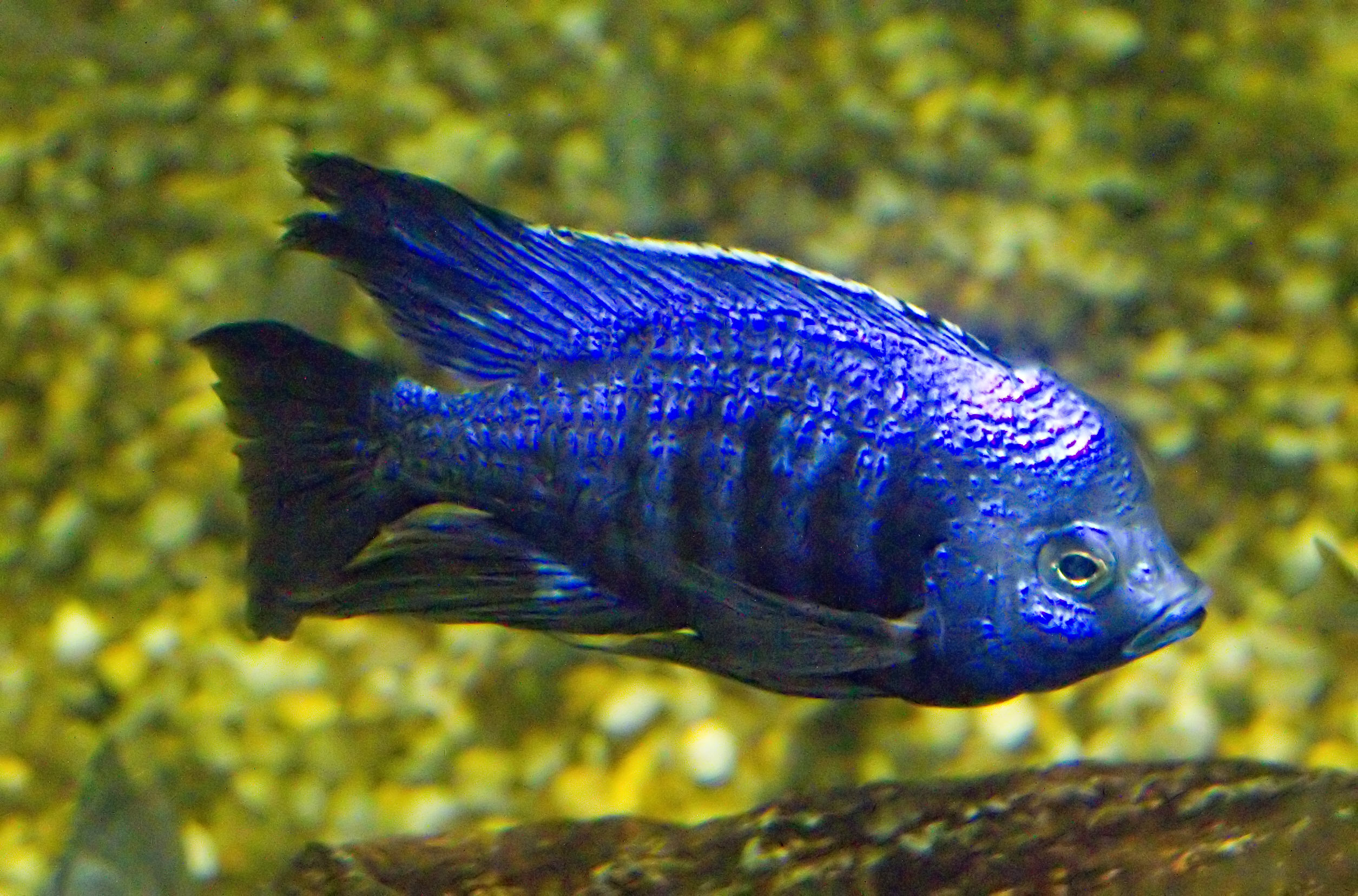Explore Lake Nyasa : Lake Nyasa, often known as Lake Malawi, is the third biggest and southernmost lake in the East African Rift Valley. It is located primarily within Malawi.

The lake is called Lake Nyasa, and it is situated in the southwest of Tanzania, on the borders of Malawi and Tanzania. It does, however, share borders with Tanzania, Malawi, and Mozambique. With a length of 550 kilometers and a width of 75 kilometers, it is the third largest lake in Africa (after Lake Victoria and Lake Tanganyika both located in Tanzania) and spans an area of more than 11,400 square kilometers. The lake is 700 meters deep in certain places.
The lake is surrounded by two mountain ranges that have steep sides: the Nyika Plateau and the forested Livingston Mountains, which give hikers and backpackers a stunning perspective of the lake from a distance. It is one of the lakes in the Great Rift Valley which resembles Lake Tanganyika in certain ways. One distinguishing feature of the lake is that it receives water from 14 different rivers, yet only one of them, the River Shire, empties into the sea.
The lake also goes by many other names, including “Lake of Stars,” which is given by couples who visit and find it to be one of the most romantic and enchanted places in Eastern Africa. It has a lot to offer, including several chances for diving and water sports. The lake is one of the most beautiful lakes with spectacular underwater vistas and is incredibly rich in different fish species, Explore Lake Nyasa .

The lake has some lovely beaches and swimming areas. Matema, located in the northern portion of the lake, is regarded as the ideal beach for those who enjoy swimming and lounging by the water’s edge. Lake Nyasa’s water is bilharzia-free, in contrast to other lakes. There are also beautiful waterfalls and caverns to explore Tanzania Tours.
TOURIST ACTIVITIES: THINGS TO DO ON LAKE NYASA
Lake Nyasa is not as well-known for tourism as its lakes to the north, Lake Tanganyika and Lake Victoria. Nevertheless, those who enjoy the outdoors and wildlife will find something to do here too. There are numerous fascinating fish, birds, and large and small creatures to observe in and around the lake. A sizable national park bearing the same name as the lake is located on the Malawian side of the southern peninsula. In addition to the species already mentioned, it has a huge portion of land and an aquatic area that is home to leopards. Other protected areas can be found throughout the lake in various locations.
The “most flowery” national park in the nation, Kitulo National Park, also known as the Garden of the Gods, is located on the Tanzanian side of the lake, less than 50 kilometers to the north. Luxurious meadows completely covered in flowers, mostly orchids but also lobelia, lilies, asters, aloe, geraniums, and others, are its main draw. There are 350 different plant species in all.
Many lovely butterflies and other insects are drawn to Kitulo’s wealth of vegetation. The fecundity of lizards, chameleons, frogs, and numerous birds is consequently boosted by this. Livingston and Ndumbi forests make up a portion of the park.
You may dive and snorkel in the lake itself. You don’t even need to dive very deep to observe the vibrant underwater life of the heart of Africa because the colorful mbuna fish swim in the lake within a hundred meters of the shore in a huge variety.
Boating and fishing are two other lakeside recreation activities. You can combine the two activities. These pastime is quite well-liked, as evidenced by the number of records that are periodically updated by swimmers from different regions of the world. There are also beautiful waterfalls and caverns to explore.
Martin Hobbs set the most outstanding record in April 2019. He divided his journey into legs and swam the full length of Lake Nyasa. Martin had to travel the length of the lake in 54 days (which, we should remind you, is about 570 kilometers long). Every day, the desperate swimmer attempted to swim roughly 11 kilometers, but it was rarely successful due to inclement weather and one occasion when Martin was sucked into a tornado. Crocodile apprehension also stood in his way, but fortunately they can only be found on the lake’s coast.
We do not advise you to replicate Martin Hobbs’ careless act. Nevertheless, we heartily recommend visiting the gorgeous Lake Nyasa to witness this exceptional natural wonder with its lovely surroundings and rich animal kingdom, Explore Lake Nyasa
FISHES OF NYASA:
In terms of the variety of fish species, Nyasa is a natural treasure trove similar to other significant lakes in East Africa. These lakes have long been closed systems because of the way they formed, which means that their evolution has occurred independently of that of all other aquatic systems. As a result, new species that are unique to our planet have begun to emerge. Despite not having many visitors, Lake Nyasa is incredibly beautiful and home to many crocodiles and hippopotamuses. For fish enthusiasts, Lake Nyasa is the most ecologically diverse lake, with over 30% of the world’s cichlid species (brightly colored fish that are visible in the lake’s pure water), Explore Lake Nyasa
According to current estimates, the lake is home to more than 1,000 species of fish. Although new species are regularly discovered, the study of fauna moves at a somewhat modest pace another interesting fact is that, according to researchers, a new species of cichlid normally arises once every 20 generations. Therefore, some scientists believe that there may be more than 2000 different species of fish in this area.

Of course, cichlid species are the most visually appealing. Aquarists from all over the world look for beautiful fish to put in their home aquariums where they may be observed and studied. These fish are known as “motley perches” because of their vibrant and varied colors.
There are at least 600 recognized species of cichlids in Lake Nyasa, also known as Lake Malawi, but only about half of them have been described. There are around 800 different species worldwide. It is difficult to comprehend that all of these creatures evolved from a single species that previously traveled there from the nearby Lake Tanganyika until you view this figure.
The three groups of local cichlids are tilapia, utaka, and mbuna. Due to its attractiveness and originality, the last group is of the most interest. Tilapias are rather widespread throughout the rest of the planet as well; they have developed natural habitats in Asia, North and Latin America, and even chilly Europe.
OTHER FISH
Although other fish also call Lake Nyasa home, cichlids are what give the lake its first notoriety. The sharp tooth catfish, whose body is elongated like an eel’s, is fascinating to look at. Even longer bodies, which at first glance resemble snakes in the case of the Mastacembelus fish, They can grow to a length of one meter, Explore Lake Nyasa .
The English name for this family, Mormyridae, reflects the peculiar appearance of the so-called freshwater elephantfish, which have elongated snouts that resemble the trunk of an elephant (freshwater elephantfish). These fish use their snouts to pierce the sediment at the lake’s bottom in search of food. They also possess a special ability that allows them to discover food and navigate through the murky bottom waters by creating a weak electric field with the help of their muscles. This ability also allows them to quickly spot harmful predators.
Barbus A.K.A barbell, dotted synodontis, and the redtail shark minnow, which is well-liked among aquarists, also freely swim in the waters of the southernmost of the Great African Lakes. There are numerous additional species that are not cichlids. There are also several Lake Nyasa endemics among them.


